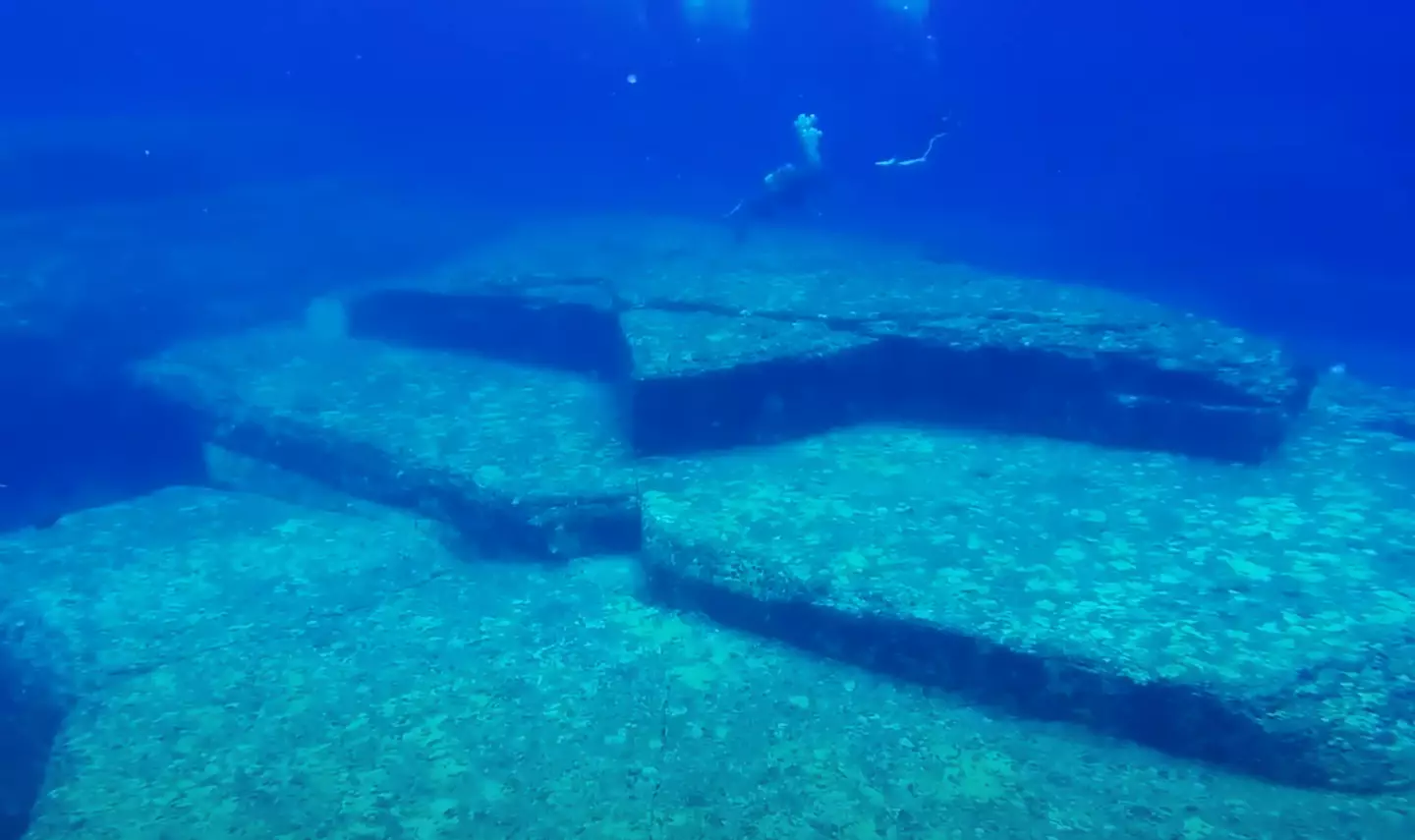Across the globe, there are countless mysteries still waiting to be unraveled, one of which is the Yonaguni Monument.
Situated off the coast of Japan, the Yonaguni Monument is a pyramid-like structure that lies 25 meters beneath the ocean’s surface.
It takes its name from the nearby Japanese island of Yonaguni and was first discovered in 1987.
Local diver Kihachiro Aratake discovered the ruins “by pure coincidence.”
“I was very emotional when I found it,” he told the BBC about the monumental discovery.
“Upon finding it, I realized this would become a treasure of Yonaguni island. I kept it a secret and didn’t tell anyone on my staff.”
However, the secret didn’t last long, as a team of scientists quickly arrived to begin investigating the mysterious structure.
The pyramid is thought to be around 10,000 years old, leaving researchers puzzled. The structure appears to be man-made, featuring what seem to be stairs and flat terraces.
With this in mind, some have suggested that the Yonaguni Monument (also known as ‘Japan’s Atlantis’) could predate both the Egyptian pyramids and Stonehenge.
The pyramids are estimated to be around 4,500 years old, while Stonehenge was constructed about 5,000 years ago, according to English Heritage.
But archaeologists are struggling to agree on how old the Japan-based structure is and if it was man-made.

It’s long been debated whether the monument was natural or man-made (YouTube/@PADI_JP)
For example, on a 2024 episode of The Joe Rogan Experience Graham Hancock and archaeologist Flint Dibble butted heads over the ongoing debate.
“I’ve seen a lot of strange natural formations, and I don’t see anything here that reminds me of human architecture,” Dibble argued at the time.
Hancock responded, “To me, Flint, it’s incredible that you see this as purely natural, but I guess we just have very different perspectives.”
He continued, as reported by the New York Post: “If this really was built by a mysterious civilization more than 10,000 years ago, it would place Yonaguni on par with Göbekli Tepe in Turkey—one of the oldest known man-made structures, dating back to around 9500 BC.”
Japanese marine geologist Masaaki Kimura shares Hancock’s view that the monument was not formed naturally. He also believes the Yonaguni Monument could be one of the oldest man-made structures in history.
In 2007, Kimura suggested that the monument was around 6,000 years old.
Initially, like Flint, Kimura believed the pyramid was a natural formation. However, after closer examination, he concluded otherwise.
“I think it’s very difficult to explain their origin as purely natural, due to the overwhelming evidence of human influence on the structures,” he said, according to National Geographic.



